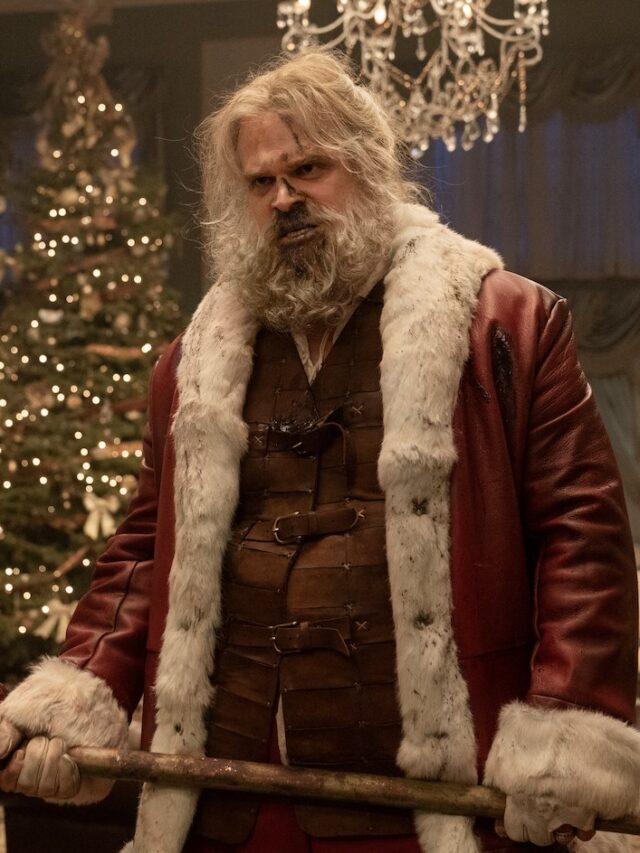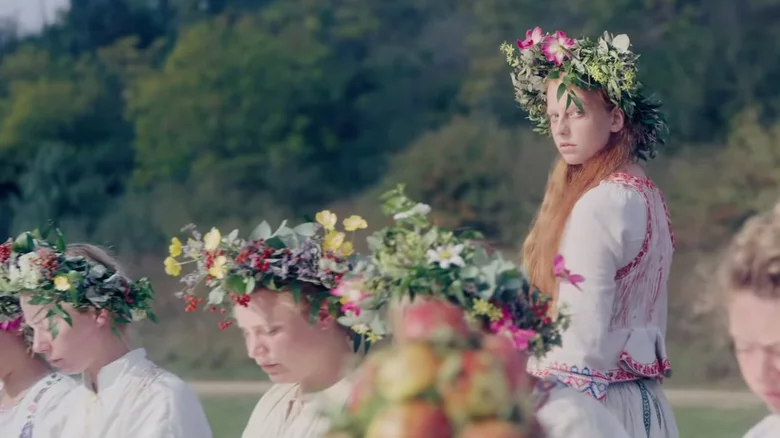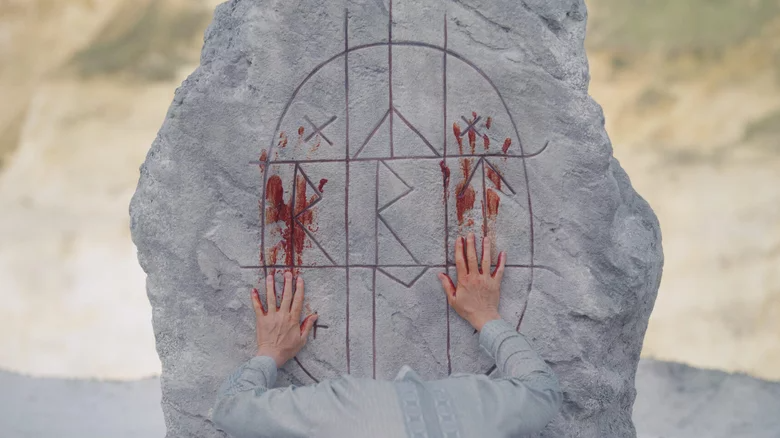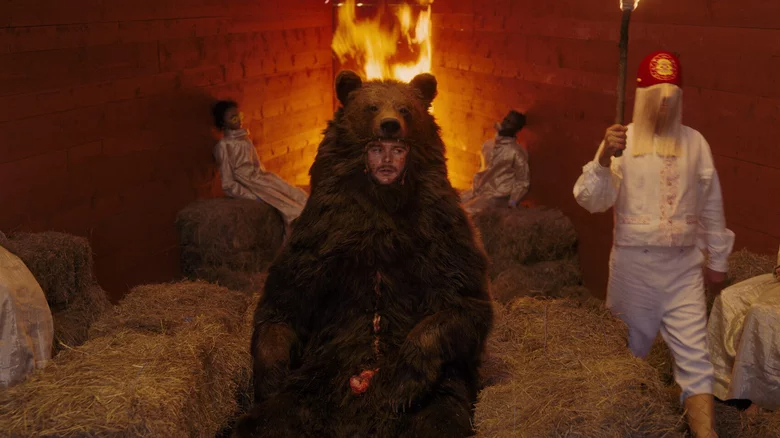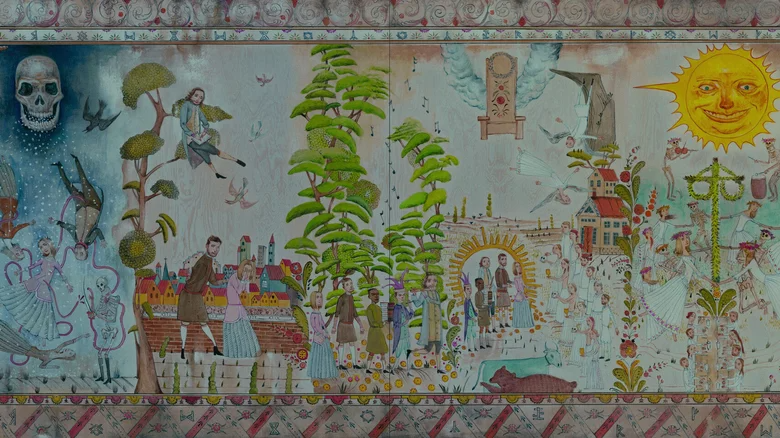A24’s “Midsommar,” a daytime horror film, isn’t your ordinary slasher or haunted home movie. Written and directed by Ari Aster, the film successfully juggles running meta-commentaries on trauma, gender, relationships, racism, cults, and personal identity with a surprising amount of laughter.
After Dani (Florence Pugh) loses every member of her family in an unimaginable tragedy, “Midsommar” follows her. Although she doesn’t have a great relationship with her boyfriend Christian (Jack Reynor), he nevertheless asks her to go on a trip with him and his buddies to a small Swedish village. To witness an ancient event that only takes place once every 90 years, Christian and his buddies Josh (William Jackson Harper), Mark (Will Poulter), and transfer student Pelle (Vilhelm Blomgren) are travelling. Connie (Ellora Torchia) and Simon (Archie Madekwe), London-based students brought by Pelle’s brother Ingemar, meet them (Hampus Hallberg).
The village in rural Hälsingland, Sweden, has days in the summer when the sun shines for at least 23 hours due to its geographic location. In addition to encouraging guests to use psychedelic drugs, the residents of the commune of Hrga make the near-constant daylight even more bewildering. As the visitors start to vanish one by one, the situation turns spooky. By the time “Midsommar” comes to a close, Dani has experienced each stage of sorrow for her loved ones, her romantic partner, and her previous self. Now that the initial shock has subsided, how does “Midsommar’s” violent and crazy ending hold up?
Spoilers and everything, let’s have a look.
A 21st Century Fable
The Hrga prepare Dani and Christian for the closing ceremony after they have each undergone their own trials. We learn that the commune killed Mark, Connie, Josh, and Simon, and that each of them had been clothed to symbolise their role as a sacrifice. Heartbroken over Connie, Pelle’s brother offers himself and another Hrga member by the name of Ulf as a potential sacrifice. Dani is given two options for the ultimate sacrifice as the May Queen: a Christian stuffed inside the hide of a grizzly bear, or a random villager. Of course, she picks Christian in what may be the most painful split ever. The commune members lead Christian into the yellow, pyramid-shaped temple before setting it on fire.
Together with the guys who are trapped and burning alive within the temple, Dani and the other members of the commune thrash and scream. They engage in additional group suffering together, but the last image lingers on Dani’s features as a smile spreads across her features.
That smile is both a little frightening and incredibly relieving for Dani and anyone who may relate to her struggle. With what price did Dani change from being alone and miserable to being held and content? Counting the elders, there are nine people dead, and Dani has joined a commune that is okay with drugging residents and performing ritual sacrifices. The moral of the story is to “be careful what you pray for” because you never know what atrocities Dani might later do while a member of Hrga.
Communal Catharsis and Shared Grief
After seeing a ättestupa, a ritual in which two elders kill themselves by jumping off a cliff, Dani, Christian, and the other tourists are understandably scared. Connie and Simon leave on their own, claiming to have rides back to town. Dani and Christian start to argue more as a result of her lack of comfort in this strange setting. Maja (Isabelle Grill), a member of the Hrga, has been seen to have eyes for Christian and begins to perform a rite for a love spell that entails feeding him her pubic hair and menstrual blood.
Dani takes part in more Hrga rites, such as the selection of the new May Queen by dancing around the maypole while high on psychedelic tea. Dani, who is the last person standing and is crowned the May Queen, is pulled by humans and carried around on a platform while wearing a flower crown. Christian engages in a sexual ritual with Maja and many of the other women while she is away carrying out a harvest rite involving flowers and other sacrificed goods. When Dani sees him in the act, she goes into the dormitory for the young people while crying. The other girls grab her, hold her, and start crying right along with her.
Dani has experienced isolation throughout her ordeal. Her own family had passed away, and Christian had never made her feel loved or supported. She is hugged and made to “feel held” by the Hrga women as they share her sorrow. Dani has been searching for community her entire life and has just succeeded in finding it. It then becomes a matter of whether her seclusion or that community is better or worse.
Differences in the Director’s Cut
The length of Ari Aster’s initial plan for “Midsommar” was approximately three hours. Character-enhancing subplots were discarded because the majority of them were too intricately entwined to be removed while keeping the others. Thankfully, Aster and A24 released his director’s cut, which gives the movie’s explosive conclusion more perspective.
The director’s cut includes more scenes of Christian and Josh debating their respective theses, some indications that the Hrga are white nationalists, a scenario that explains Connie’s drowning death, and more. Dani joining them at the end is even more bittersweet because of how evil Hrga appears in the scenes. Additionally, it serves as a stronger critique of American imperialism by demonstrating how bad the majority of the foreign visitors are.
The scene that was reinserted into the director’s edit may be the most significant because it depicts Christian giving his assent to the sex rite before he consumes any psychedelics. His betrayal of Dani was more overt, which slightly increased the justification for his horrific demise. Fans of the theatrical cut will undoubtedly learn something from the director’s cut, which is a far more comprehensive narrative that offers spectators much to consider. Unfortunately, you can only do that right now on Apple TV or by locating a special edition Blu-ray from A24.
The film “Midsommar” is intricate and has a lot to say, yet its resolution is ambiguous. Let’s explore some of the other parts of the film to see what else we can make out.
Each victim has a rune
The two elders who commit themselves during the first ceremony, the ättestupa, cut their palms and rubbed the blood on a sizable runestone. The stone is inscribed with nine Elder Futhark runes, which are all from the pre-Norse alphabet. Each of the nine sacrifices is symbolised by a different rune, which also represents distinct concepts in addition to sounds and letters. In Norse mythology, the number nine is significant because it represents the existence of nine realms and is a sacred number.
The Gebo runes number four. Gebo, which meaning “gift,” stands for the four willing sacrifices made by Hrga. The rune Raido, which stands for travel and the two British tourists Connie and Simon, has two similar variations. The rune Tiwaz, which stands for justice, is next to them; Christian is wearing this emblem on his attire. Josh seeks to unravel the secrets and riddles represented by the bottom rune, Perthro, and by the top rune, Algiz, an inverted symbol of protection. With this inversion, it becomes desecration rather than protection, which is exactly what Mark does when he desecrates their precious tree by urinating on it.
There are numerous more allusions to the runes throughout the movie, but the rune Dagaz, which stands for enlightenment, engraved on Josh’s foot is among the most significant. Josh broke the Hrga’s confidence because he was so eager to learn more about them, and his quest for “enlightenment” is what ultimately doomed him to death.
The flaming bear
However, not all of the symbolism in “Midsommar” derives from concrete images. Christian is stuffed into a bear hide and then placed with the others in the sacrificial triangle home in the film’s concluding scene. Yet, why a bear?
In Norse mythology, bears were associated with the harsh yet clever warrior and god-king Odin. Berserkers, a distinct breed of Viking warriors, engaged in combat while intoxicated by psychedelic mushrooms and frequently clad in bear skins. The terms “berserker” actually derive from the Middle Norse words “ber,” which means “bear,” and “serk,” which means “shirt.” This connects into Christian’s function as the rune Tiwaz, who symbolises the toughest of Norse warriors.
The sacrifices are consumed by cleansing flames that grant a chance for rebirth. Because forest fires frequently prepare the ground for the emergence of new life, fire is a symbol of both death and resurrection in Norse myth, as it is in many other belief systems. The nine sacrifices to the gods will be consumed by the flames, which will also revitalise the Hrga.
The paintings tell the tale
There are many paintings throughout “Midsommar,” including a sizable tableau at the start that presents a fantasy version of the movie’s events. The numerous paintings in “Midsommar,” including all of the small paintings in the home where the young people sleep, were created by artists Ragnar Persson and Nille Svensson. There are hints scattered throughout the paintings, such as a description of how Maja “seduces” Christian using blood magic and allusions to the different sacrifices that ultimately take place.
However, the first picture, which shows the movie’s events in five separate acts, has the most striking foreshadowing. Winter-themed initial frame shows Dani’s family being held captive by the ghost of death, but Dani’s cord is severed, indicating that she lives. In the following panel, Christian is unable to console Dani as she sobs, while Pelle is watching and taking notes. A panel showing the entire group entering Hrga is shown after this, followed by a panel showing everyone gathered for a ceremony. Josh is usually seen with a stack of books in his hands, whereas Mark is always portrayed as the Fool, replete with the stupid hat he is destined to wear.
Death is hiding among the dancing females in the final panel, which depicts the maypole dance and feast. In place of the enormous skull that is looming over us in the first panel, we now see a menacing sun. Even if daylight horror is challenging to pull off, Aster and his team were aware of its potential.
Being a binge-watcher himself, finding Content to write about comes naturally to Divesh. From Anime to Trending Netflix Series and Celebrity News, he covers every detail and always find the right sources for his research.




